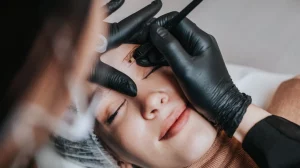In the realm of beauty professionals, the allure of microblading certification is undeniable. However, the often-overlooked aspect of financial readiness plays a crucial role in achieving success in this field. Beyond mastering the technique lies the necessity for meticulous financial planning to lay a strong foundation for a thriving career. Understanding the financial considerations associated with certification is key to long-term success and increased earning potential. So, what are these vital financial aspects, and how can you manage your finances effectively to maximize your returns?
Key Takeaways
- Understand microblading certification costs, including equipment, supplies, and ongoing training, to plan and prepare financially.
- Create a thorough financial plan, accounting for certification costs, living expenses, and savings, to mitigate financial burden.
- Allocate a budget for high-quality microblading tools and supplies, considering maintenance and upgrade costs, to establish a strong career foundation.
- Focus on leveraging expertise for substantial income by setting competitive pricing, developing a strong online presence, and providing exceptional customer service.
- Research and understand the certification process, manage time effectively, and practice consistently to achieve successful microblading certification.
Understanding Microblading Certification Costs
Obtaining a microblading certification requires a significant investment, with costs varying widely depending on factors such as location, instructor expertise, and course duration. Researching and understanding the costs involved, including equipment, supplies, and ongoing training, is crucial. Knowing what to expect financially will help you plan and prepare for a successful certification journey, ultimately Tips for successful microblading certification.
Financial Planning for Certification Success
By establishing a thorough financial plan, aspiring microbladers can mitigate the financial burden of certification and focus on achieving their career goals. A realistic plan should account for certification costs, living expenses, and savings. Prioritize needs over wants, and allocate funds accordingly. With a solid financial foundation, you’ll be better equipped to pursue Tips for successful microblading certification and secure a successful career in microblading.
Budgeting for Microblading Equipment
Several thousand dollars are typically invested in high-quality microblading equipment, making it critical to allocate a dedicated budget for these essential tools. When creating your budget, consider the cost of needles, pigments, and other necessary supplies. Set aside funds for equipment maintenance and potential upgrades. By budgeting wisely, you’ll establish a strong foundation for your microblading career, paving the way for Tips for successful microblading certification.
Maximizing Earning Potential Post-Certification
Having invested in high-quality equipment, the next step is to focus on maximizing earning potential post-certification, where your expertise and skills can be leveraged to generate a substantial income. Set competitive pricing, develop a strong online presence, and build a loyal client base to increase revenue. Effective marketing strategies and exceptional customer service will help you stand out in the industry.
Tips for Successful Microblading Certification
To achieve successful microblading certification, it is essential to thoroughly research and understand the certification process, including the required training hours, coursework, and examination criteria. Stay organized, manage your time effectively, and practice consistently to build confidence in your skills. Focus on mastering the fundamentals, and don’t hesitate to seek guidance from experienced professionals.

Frequently Asked Questions
How Long Does It Take to Recover the Investment in Microblading Certification?
Recovering the investment in microblading certification typically takes 2-6 months, depending on factors such as client acquisition rate, pricing, and marketing strategies, making it essential to create a solid business plan to guarantee timely ROI.
Can I Claim Tax Deductions for Microblading Certification Expenses?
As a microblading professional, you can claim tax deductions for certification expenses, including course fees, equipment, and travel costs, as long as they are directly related to your business operations and meet the IRS’s guidelines.
Are There Any Financing Options Available for Certification Courses?
Yes, various financing options are available for microblading certification courses, including payment plans, scholarships, and personal loans from reputable lenders, allowing aspiring professionals to invest in their career development.
How Much Should I Budget for Ongoing Education and Training?
To maintain expertise, budget at least 5-10% of your annual income for ongoing education and training, ensuring you stay updated on the latest microblading techniques and industry developments.
Will Certification Guarantee a Certain Level of Income or Client Base?
Certification does not guarantee a specific income or client base, as success depends on various factors, including marketing, networking, and quality of services offered, as well as local market conditions and competition.
Conclusion
Ideal financial planning is essential for microblading certification success. By understanding certification costs, budgeting for equipment, and prioritizing ongoing training, individuals can establish a strong foundation for a lucrative career. Effective financial management enables microblading professionals to maximize earning potential, stay competitive, and achieve long-term success in this field.
You May Also Like To Read:





